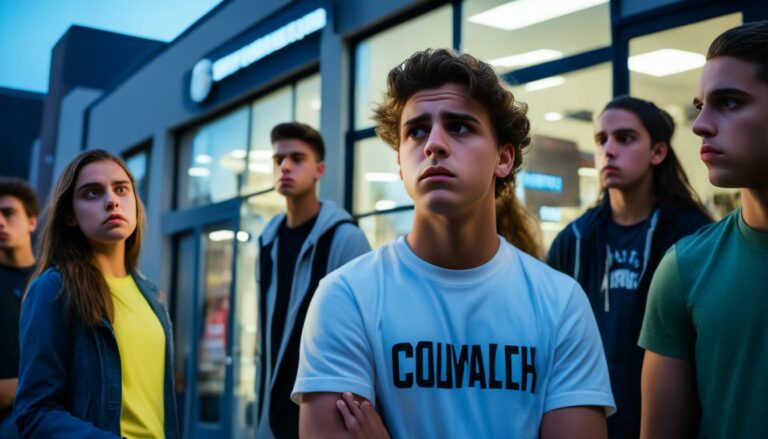Which Colors Are the Teenage Mutant Ninja Turtles: Unveiling the TMNT Color Palette
Ever wondered about the signature colors of the Teenage Mutant Ninja Turtles? The iconic quartet, ninja turtle Leonardo, Michelangelo, Donatello, and Raphael each don a distinct color that reflects their unique personalities. From cool and collected blue to fiery red, these colors are more than just a fashion statement; they represent individuality in action.
The vibrant hues not only differentiate the turtles but also symbolize their contrasting traits and approaches. As we delve into this colorful world, get ready to uncover how each shade mirrors the diverse characteristics of our favorite crime-fighting reptiles. Let’s explore what lies beneath these vivid exteriors and discover how these colors play a pivotal role in defining the Teenage Mutant Ninja Turtles’ identities.
Key Takeaways
- The colors of the Teenage Mutant Ninja Turtles (TMNT) are not just for aesthetics; they represent the unique characteristics and personalities of each turtle.
- Understanding the significance of each color can provide insight into leadership, energy, intellect, and passion, which can be applied in personal and professional development.
- The synergy between the turtles’ colors and characteristics highlights the importance of embracing individual strengths and working collaboratively as a team.
- The colors of the TMNT serve as a memorable and relatable way to internalize the message of embracing diversity and leveraging unique abilities for collective success.
- Reflecting on the TMNT color palette can inspire individuals to appreciate the impact of popular culture on perceptions of color and personality traits.
- Exploring the broader impact of TMNT colors emphasizes the enduring influence of popular media in shaping perceptions and sparking creativity.
Meet the Heroes in a Half Shell
Names and Colors
The Teenage Mutant Ninja Turtles each have their own unique color, making it easy to tell them apart. Leonardo wears a blue bandana, while Michelangelo is associated with orange. Then there’s Donatello, who sports a purple bandana, and lastly, Raphael, whose signature color is red. These colors are consistent across various media adaptations of the popular franchise.
Each turtle’s color corresponds to their individual personality traits. For instance, Leonardo’s blue signifies calmness and stability as he takes on the role of the team leader. Meanwhile, Michelangelo’s orange reflects his free-spirited and lighthearted nature. Donatello’s purple represents wisdom and intelligence due to his technological expertise within the group. Lastly, Raphael’s red symbolizes aggression and passion in line with his hot-headed persona.
Signature Weapons
In addition to their distinctive colors, each turtle wields a specific weapon that aligns with their combat style and temperament. Leonardo prefers using katana swords for swift strikes; these weapons complement his disciplined approach to fighting as well as his leadership qualities within the group. On the other hand, Michelangelo favors nunchaku for quick maneuvers during battle; these weapons match his playful nature but also demonstrate his agility when facing adversaries. Meanwhile, Donatello utilizes a bo staff due to its versatility in both offense and defense; this choice mirrors Donatello’s strategic thinking in combat scenarios. Lastly, we have Raphael, who employs sai – sharp-pointed metal batons – reflecting his aggressive stance towards enemies while showcasing precision in close combat situations.
These distinct weapons not only emphasize each turtle’s individuality but also contribute to their overall effectiveness during confrontations with villains.
Leonardo’s Leadership in Blue
Leonardo, the blue-masked Teenage Mutant Ninja Turtle, is the inspirational leader of the group. He is known for his exceptional leadership skills and often depicted as the responsible and level-headed brother. This makes him an essential part of the team, providing guidance and direction to his fellow turtles.
His mastery of ninjutsu and swordsmanship sets him apart as a formidable warrior. Leonardo’s proficiency with his katana swords makes him a force to be reckoned with in combat situations. His dedication to honing these skills reflects his commitment to protecting his brothers and fighting against their enemies.
Leonardo’s leadership qualities are evident through his decision-making abilities during critical moments. His strategic thinking helps guide the team through challenging situations, making him an invaluable asset to the Teenage Mutant Ninja Turtles. Leonardo’s expertise in using katana swords showcases not only his combat prowess but also serves as an inspiration for fans who admire his dedication to mastering this traditional weapon.
Michelangelo’s Orange Energy
Michelangelo, the fun-loving hero of the Teenage Mutant Ninja Turtles, is known for his carefree and easygoing nature. He brings humor and light-heartedness to the team dynamic, making him a beloved character among fans. His energetic and lively personality reflects in his choice of color – orange.
The vibrant orange hue symbolizes Michelangelo’s exuberance and zest for life. It represents his enthusiasm and optimism, adding a bright pop of color to the group. Just like how blue embodies Leonardo’s leadership qualities, orange perfectly encapsulates Michelangelo’s free-spirited nature.
Michelangelo’s weapon of choice is nunchaku, which he wields with impressive agility and flair. The nunchaku perfectly complements his acrobatic fighting style and adds an element of excitement to his battle sequences. This weapon not only showcases his physical prowess but also highlights his playful approach to combat.
Donatello’s Purple Intellect
Donatello, the tech-savvy member of the Teenage Mutant Ninja Turtles, is known for his purple bandana. His intelligence and inventiveness set him apart from his brothers. In some adaptations, Donatello’s bo staff serves as a high-tech gadget, showcasing his proficiency in technology.
His bo staff not only provides him with reach but also enhances his defensive capabilities. With his keen intellect, Donatello modifies and upgrades the bo staff to make it more versatile in combat situations.
Donatello’s role as the group’s tech genius allows him to contribute significantly during battles by using gadgets he creates. For example, he may develop devices that can jam enemy communications or create distractions to aid in their escape. This showcases how he combines both his intelligence and combat skills to benefit the team.
Raphael’s Red Passion
Raphael, the fierce warrior of the Teenage Mutant Ninja Turtles, is easily recognized by his red bandana. His hot-headed and aggressive nature often leads him to clash with authority figures; however, underneath this tough exterior lies a deep sense of loyalty and protection for his brothers. Despite his rebellious streak, Raphael’s unwavering commitment to safeguarding his team sets him apart as a formidable ally.
Raphael’s weapon of choice, the sai, perfectly complements his aggressive fighting style. With exceptional skill in wielding these dual-pointed weapons, he becomes an even more formidable combatant on the battlefield. The combination of Raphael’s fiery personality and mastery of the sai makes him a force to be reckoned with in any battle scenario.
In battles against their enemies or when training together as a team, Raphael’s red color symbolizes not only his passion but also serves as a reminder that each turtle has their unique strengths and personalities. Just like how Donatello’s purple represents intellect or Leonardo’s blue signifies leadership qualities.
TMNT Color Palette Overview
Visual Distinction – The turtles’ distinct colors make them easily recognizable.
Teenage Mutant Ninja Turtles, commonly known as TMNT, are visually distinctive due to their unique color palette. Each turtle in the group is easily identifiable by their individual bandana colors: Leonardo wears a blue bandana, Raphael is recognized by his red bandana, Michelangelo sports an orange one, and Donatello distinguishes himself with a purple bandana. This deliberate use of different colors allows fans to quickly recognize and differentiate between the four characters.
The visual distinction provided by these vibrant colors extends beyond mere aesthetics; it also serves to emphasize the turtles’ individuality. For instance, when someone mentions “the one with the red bandana,” most people immediately think of Raphael. This simple yet effective visual cue has become an iconic part of pop culture and has contributed significantly to the enduring popularity of the Teenage Mutant Ninja Turtles franchise.
Character Association – Fans often associate themselves with a specific turtle based on personality traits.
Beyond their visual appeal, each turtle’s distinct color plays a crucial role in character association among fans. The personalities of Leonardo (blue), Raphael (red), Michelangelo (orange), and Donatello (purple) have led fans to identify with specific turtles based on their unique qualities. For example, those who admire leadership skills may resonate more with Leonardo’s blue persona because he is often depicted as the responsible leader of the group.
On the other hand, individuals who appreciate rebelliousness or passion might find themselves drawn towards Raphael’s red-themed character – previously discussed for its connection to his fiery temperament in our previous section. Similarly, those who value intelligence and technological prowess may feel a kinship with Donatello due to his purple attire representing wisdom and innovation within the team dynamic.
Colors and Characteristics Synergy
Personality Reflection
The Teenage Mutant Ninja Turtles‘ individual personalities are distinctly reflected in their chosen colors, weapons, and fighting styles. For example, Leonardo’s blue bandana represents his calm and focused nature, while his weapon of choice, the katana swords, reflects his leadership qualities. On the other hand, Michelangelo’s orange bandana symbolizes his lighthearted and fun-loving demeanor. His weapon of choice is nunchaku, which aligns with his agile and playful fighting style.
Each turtle’s distinct traits contribute to their cohesive team dynamic by bringing a unique set of skills to the table. Raphael’s red bandana signifies his fiery temper and aggressive nature in battle. His use of twin sai as weapons complements this persona perfectly. Lastly, Donatello’s purple bandana mirrors his intellectual prowess as the team’s tech-savvy member. His employment of a bo staff showcases strategic combat techniques that balance out the group’s overall strengths.
The turtles’ diverse personalities create a balanced team dynamic, where each member brings something valuable to the table during battles against adversaries such as Shredder or Krang. While Leonardo embodies leadership qualities with an emphasis on strategy and discipline, Raphael adds ferocity and strength to confront formidable opponents head-on without hesitation.
In contrast, Michelangelo infuses light-heartedness into tense situations through humor while using agility to outmaneuver foes effortlessly. Donatello contributes technological expertise along with tactical planning for both offense and defense strategies during combat scenarios.
Behind the Masks and Colors
Origin Story
The Teenage Mutant Ninja Turtles, created by Kevin Eastman and Peter Laird in 1984, started as a parody comic book. The characters were initially conceived as a spoof before unexpectedly capturing the hearts of audiences worldwide. As the franchise gained popularity, it expanded into various forms of media, including animated series, movies, and merchandise.
Throughout their evolution from comic books to television shows and films, the colors of the Teenage Mutant Ninja Turtles have remained consistent. Leonardo is associated with blue, Donatello with purple, Michelangelo with orange, and Raphael with red. These distinct hues are integral to each character’s identity and play a crucial role in differentiating them from one another.
Evolution of Colors
The turtles’ color scheme has become iconic over time; it is instantly recognizable by fans across generations. Whether depicted in animated form or portrayed through action figures, these vibrant colors serve as visual cues for identifying each turtle. This consistency allows fans to connect with their favorite characters regardless of the medium through which they encounter them.
From comic books to animated series such as “Teenage Mutant Ninja Turtles” (1987) and modern adaptations like “Rise of the Teenage Mutant Ninja Turtles,” the turtles’ distinctive colors have endured. Even when reimagined for new iterations or artistic styles, these hues remain unchanged—a testament to their enduring significance within popular culture.
Remembering the Turtle Power Colors
Memory Tricks
Fans of the Teenage Mutant Ninja Turtles often use mnemonic devices to remember each turtle’s associated color and weapon. For example, Leonardo wears a blue bandana and wields two katana swords, while Michelangelo dons an orange bandana and fights with nunchucks. These distinct colors not only help fans identify each turtle but also aid in recalling their unique weapons. When purchasing merchandise or watching media related to the turtles, these colors serve as quick identifiers for fans.
The distinct colors associated with each turtle allow fans to easily distinguish them in various forms of media and merchandise. Whether it’s action figures, comic books, or animated shows, the color-coded bandanas make it effortless for fans to recognize which turtle is which. This visual cue becomes especially crucial during fast-paced action sequences where quick identification is necessary.
Color Cues
In addition to aiding fan memory recall, the turtles’ colors play a significant role as visual cues within storytelling and character identification. The four different colored bandanas are essential in distinguishing between the characters during intense fight scenes or moments when they are all together on screen. For instance, if there’s a scene where all four turtles are fighting enemies simultaneously, their individual colored bandanas help viewers follow each character’s actions amidst the chaos.
Moreover, beyond just practicality for audiences’ understanding of who’s who on screen or in print media – such as comics – these color-coded accessories have become iconic symbols that represent each turtle’s personality traits and fighting styles.
Broader Impact of TMNT Colors
Cultural Influence
The Teenage Mutant Ninja Turtles have had a profound influence on popular culture since their inception. The distinct colors associated with each turtle—Leonardo, Michelangelo, Donatello, and Raphael—have become iconic symbols in the world of entertainment. From Halloween costumes to fan art, these vibrant hues are instantly recognizable and synonymous with the beloved characters.
The franchise’s impact extends beyond mere entertainment; it has inspired an array of spin-offs, merchandise, and media adaptations. For instance, the turtles’ colors are often incorporated into various forms of pop art and urban streetwear. This widespread cultural influence exemplifies how the TMNT colors have transcended their original context to become ingrained in modern visual language.
Merchandise and Media
The Teenage Mutant Ninja Turtles franchise encompasses a diverse range of products that prominently feature the characters’ signature colors. These include comics, animated series, films, toys, video games—all emblazoned with the distinctive shades associated with each turtle. As a result, fans can immerse themselves in a plethora of merchandise that celebrates not only the characters themselves but also their respective color schemes.
Moreover,TMNT-themed items such as action figures or clothing often utilize specific color palettes to represent individual turtles accurately. For example:
- Leonardo is traditionally associated with blue.
- Michelangelo is known for his orange bandana.
- Donatello’s signature color is purple.
- Raphael is recognized by his red headband.
This extensive array of merchandise not only serves as a testament to the enduring popularity of these characters but also perpetuates their colorful legacy across generations.
Closing Thoughts
You’ve delved into the vibrant world of the Teenage Mutant Ninja Turtles, uncovering the significance behind each turtle’s unique color. From Leonardo’s leadership in blue to Michelangelo’s orange energy, Donatello’s purple intellect, and Raphael’s red passion, each hue reflects the distinct characteristics of these heroes in a half shell. As you remember the synergy between colors and personalities, it becomes clear that the TMNT color palette goes beyond aesthetics; it’s a reflection of their individuality and collective strength.
Now, take a moment to reflect on how these colors and characteristics intertwine in your own life. Embrace the diversity and unique traits that define you and those around you. Just like the Teenage Mutant Ninja Turtles, let your colors shine brightly as you navigate through challenges and celebrate victories. Cowabunga!
Frequently Asked Questions
FAQ
What are the colors of the Teenage Mutant Ninja Turtles?
The Teenage Mutant Ninja Turtles’ signature colors are blue for Leonardo, orange for Michelangelo, purple for Donatello, and red for Raphael. Each color represents their unique personalities and characteristics.
Why do the Teenage Mutant Ninja Turtles have different colors?
The distinct colors of the turtles help to distinguish them from each other and reflect their individual traits. It’s like how different flavors in a box of chocolates offer diverse experiences; each turtle’s color signifies their specific role and temperament within the group.
How do the colors relate to each turtle’s characteristics?
Each turtle’s color is closely tied to their personality traits – blue symbolizes leadership and strategy (Leonardo), orange reflects energy and cheerfulness (Michelangelo), purple denotes intelligence and creativity (Donatello), while red embodies passion and impulsiveness (Raphael).
Are there any deeper meanings behind the choice of colors for the Teenage Mutant Ninja Turtles?
Yes, beyond just visual distinction, these colors serve as a powerful tool to convey character depth. The hues act as an emblematic shorthand that instantly communicates key attributes about each turtle, much like how a chef uses various spices to add distinct flavors to dishes.
How have the TMNT colors made an impact beyond just being part of their identity?
The iconic TMNT color scheme has transcended its original purpose by becoming synonymous with pop culture itself. These vibrant hues have not only defined our beloved heroes but also influenced fashion trends, merchandise design, and even inspired creative works across various mediums.







